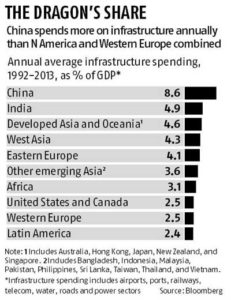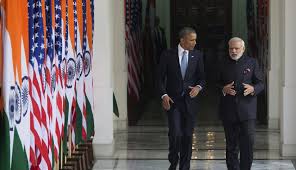ADB today marginally cut economic growth projection for Asia and Pacific region for 2016, though India is likely to meet 7.4 per cent and 7.8 per cent growth forecast for this and the following year.
Asian Development Bank said it has cut its 2016 growth projection for developing economies in Asia and the Pacific to 5.6 per cent from earlier forecast of 5.7 per cent.
“South Asia, meanwhile is expected to be the fastest growing subregion, led by India, whose economy has shrugged off global headwinds and is on track to meet ADB’s March fiscal year 2016 (year to March 2017) projected growth target of 7.4 per cent, supported by brisk consumer spending and an uptick in the rural economy”, ADB said in a supplement to its Asian Development Outlook 2016 report.
“Although the Brexit vote has affected developing Asia’s currency and stock markets, its impact on the real economy in the short term is expected to be small,” said Shang-Jin Wei, ADB’s Chief Economist.
However, in light of the tepid growth prospects in the major industrial economies, policy makers should remain vigilant and be prepared to respond to external shocks to ensure growth in the region remains robust,” Wei said.
ADB said it now forecasts 2016 growth for the developing economies at 5.6 per cent, below its previous projection of 5.7 per cent. For 2017, growth is seen unchanged at 5.7 per cent.
Growth in 2016 and 2017 is led by South Asia, and India in particular, which continues to expand strongly, while China is on track to meet earlier growth projections, it said.
In Southeast Asia, growth projections for the subregion in the 2016 and 2017 remain unchanged at 4.5 per cent and 4.8 per cent, respectively with solid performances by most economies in the first half of 2016 driven by private consumption.
The exception was Vietnam where the economy came under pressure from a worsening drought that caused a contraction in the agriculture sector, it added.
ADB said growth in Asia and the Pacific’s developing economies for 2016 and 2017 will remain solid as firm performances from South Asia, East Asia and Southeast Asia help offset softness from the US economy, and near-term market shocks from the Brexit vote.
It has projected inflation for developing Asia at 2.8 per cent for 2016 and 3 per cent or 2017- a 0.3 percentage point rise for each year from the previous forecasts.
“The rise is largely due to a recovery in oil and food prices,” it added.
The Manila headquartered ADB is owned by 67 members – 48 from the region. In 2015, ADB assistance totalled $27.2 billion, including co-financing of $10.7 billion.
Source :
http://economictimes.indiatimes.com/articleshow/53263953.cms







